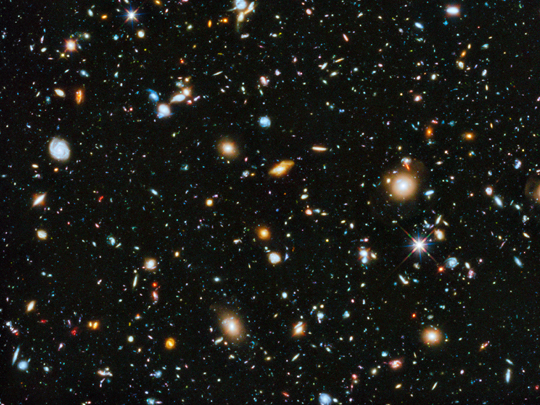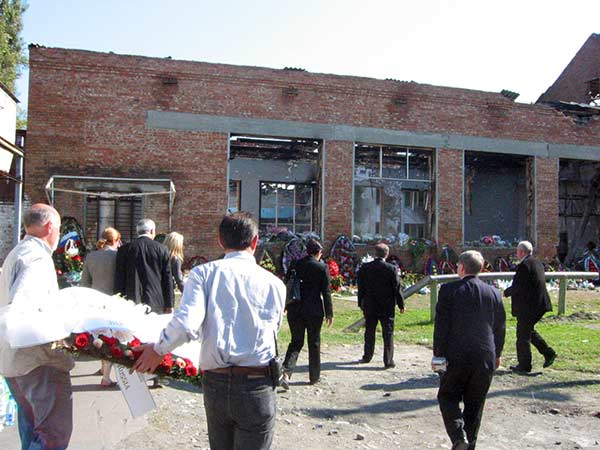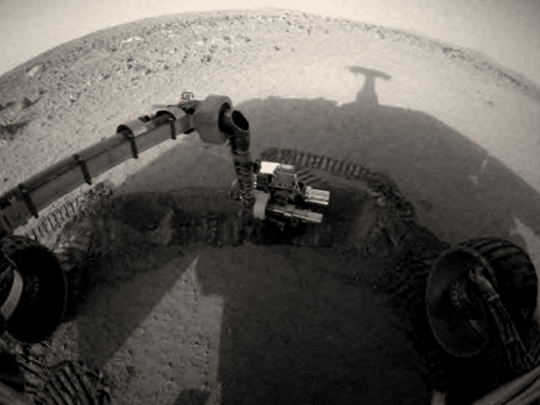Photo by Philip A. McDaniel US Navy / Wikimedia Commons / CC-BY-SA-3.0 / GFDL
1 – Indian Ocean Earthquake and Tsunami
The 2004 Indian Ocean earthquake occurred in the early hours of 26 December, with an epicentre off the west coast of northern Sumatra, registering a magnitude of up to 9.3 on the Richter scale.
A series of large tsunamis up to 30 metres (100 ft) high were created as a result of the underwater earthquake.
Communities along the surrounding coasts of the Indian Ocean were seriously affected, with the tsunamis killing more than an estimated 227,000 people in 14 countries.
The earthquake was one of the deadliest natural disasters in recorded history. Its epicentre was between the Indonesian island of Simeulue and mainland Sumatra.
Major disruptions were caused to the living conditions and commerce in Indonesia, Sri Lanka, India, and Thailand, with the Indonesian city of Banda Aceh reporting the largest number of victims.
The earthquake was the third-largest ever recorded and had the longest duration of faulting ever observed; between eight and ten minutes.
It caused the planet to vibrate as much as 10 millimetres and it remotely triggered earthquakes as far away as Alaska.
The plight of the affected countries prompted a worldwide humanitarian response, with donations totalling more than US$14 billion.
2 – The Hubble Ultra Deep Field – the Deepest Image of the Universe Ever Taken

The Hubble Ultra-Deep Field is an image of a small region of space in the constellation Fornax, containing an estimated 10,000 galaxies.
The release was combined from Hubble Space Telescope data accumulated over a period from September 24, 2003, through to January 16, 2004.
Looking back approximately 13 billion years, which is between 400 and 800 million years after the Big Bang.
The image was taken in a section of the sky with a low density of bright stars in the near-field, allowing much better viewing of dimmer, more distant objects.
The total exposure time is just under 1 million seconds, from 400 orbits, with a typical exposure time of 1200 seconds.
To observe the whole sky to the same sensitivity, the HST would need to observe continuously for a million years.
In September 2012, NASA released a further refined version of the Ultra-Deep Field dubbed the eXtreme Deep Field. This revealed galaxies spanning back 13.2 billion years.
In January 2019, the Instituto de Astrofísica de Canarias released an even deeper version of the infrared images of the Hubble Ultra Deep Field.
After this update, some galaxies were found to be almost twice as big as previously measured.
3 – Beslan School Siege

The Beslan school siege started on 1 September 2004, lasted three days, involving over 1,100 people being held hostage, including 777 children, and ended with the deaths of at least 334 people.
The crisis began when a group of armed Islamic militants, mostly Ingush and Chechen, occupied the school in the town of Beslan, North Ossetia, an autonomous republic in the North Caucasus region of Russia.
The hostage-takers were sent by the Chechen warlord Shamil Basayev, who demanded recognition of the independence of Chechnya, and Russian withdrawal from Chechnya.
On the third day of the standoff, Russian security forces stormed the building with the use of tanks, rockets and other heavy weapons.
As of December 2006, 334 people, excluding the terrorists, were killed, including 186 children.
The event led to security and political repercussions in Russia and contributed to a series of reforms which consolidated power in the Kremlin and strengthened the powers of the Russian President.
Questions about the Russian government’s management of the crisis have persisted, including allegations of disinformation and media censorship, the nature of negotiations with the terrorists, and perceptions that excessive force was used.
In 2017, a European Court of Human Rights ruling criticized Russia for not taking sufficient precautions before the event, and for using excessive lethal force when concluding the siege which violated the “right to life”.
4 – Madrid Train Bombings
The 2004 Madrid train bombings were nearly simultaneous, coordinated bombings on the commuter train system of Madrid, Spain, on the 11 March 2004.
The explosions killed 193 people and injured around 2,000.
During the peak of the morning rush hour, ten explosions occurred aboard four commuter trains. The trains were travelling on the same line and in the same direction between Alcalá de Henares and the Atocha station in Madrid.
The bombings became the deadliest terrorist attack in Spanish history and the deadliest in Europe since the Lockerbie bombing in 1988.
Controversy regarding the handling of the bombings by the government arose with Spain’s two main political parties, Spanish Socialist Workers’ Party and Partido Popular, accusing each other of concealing or distorting evidence for electoral reasons.
The bombings occurred three days before general elections in which incumbent José María Aznar’s PP was defeated. After the bombing, PP leaders claimed evidence indicated the Basque separatist group ETA was responsible for the bombings.
Islamist responsibility would have had the opposite political effect, as it would have been seen as a consequence of the PP government taking Spain into the Iraq War, a policy extremely unpopular among Spaniards.
The official investigation by the Spanish judiciary found the attacks were directed by an al-Qaeda terrorist cell, although no direct al-Qaeda participation has been established.
In October 2007, 21 of the 28 defendants standing trial were found guilty on a range of charges from forgery to murder.
Two of the defendants were sentenced each to more than 40,000 years in prison.
5 – Facebook is Launched
Facebook is a social networking service, which was launched as FaceMash in July 2003 but changed to TheFacebook on 4 February 2004.
It was founded by Mark Zuckerberg with his Harvard University roommates Eduardo Saverin, Andrew McCollum, Dustin Moskovitz, and Chris Hughes.
The website’s membership was limited by the founders to Harvard students but was expanded to other colleges in the Boston area, the Ivy League, and eventually most universities in the United States and Canada.
By September 2006, everyone with a valid email address, along with an age requirement of being 13 and older, was able to become users of the site.
Facebook held its initial public offering in February 2012, valuing the company at $104 billion, the largest valuation to date for a newly listed public company.
As of December 2018, Facebook had more than 2.3 billion monthly active users.
It is considered one of the Big Four technology companies along with Amazon, Apple, and Google.
6 – The Mars Exploration Rover Mission Begins Exploring the Surface of Mars

NASA’s Mars Exploration Rover mission was a robotic space mission involving two Mars rovers, Spirit and Opportunity, exploring the planet Mars.
It began in 2003 with the launch of the two rovers: MER-A Spirit and MER-B Opportunity to explore the Martian surface and geology. Both rovers landed on Mars in separate locations in January 2004.
On 23 March 2004, a news conference was held announcing major discoveries of evidence of past liquid water on the Martian surface.
Scientists showed pictures and data revealing a stratified pattern and cross-bedding in the rocks inside a crater.
The evidence suggested that water once flowed in the region. The irregular distribution of chlorine and bromine also suggests that the place was once the shoreline of a salty sea, which has now evaporated.
The rovers far outlived their planned missions of 90 Martian solar days, with Spirit being active until 22 March 2010, while Opportunity was active until 10 June 2018.
It holds the record for the longest distance driven by any off-Earth wheeled vehicle.
A press conference was held on 13 February 2019, announcing after numerous attempts to obtain contact with Opportunity with no response, NASA declared the Opportunity mission over, also drawing the 16-year Mars Exploration Rover mission to a close.









